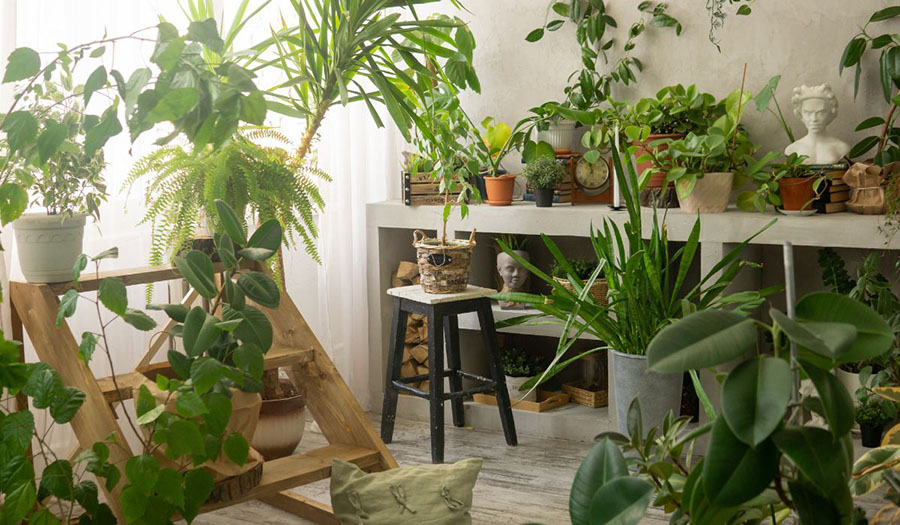In the hustle and bustle of modern life, finding solace in nature seems like a distant dream for many. However, a new trend is taking root in homes across the globe – the Indoor Jungle. This isn't just about adding a potted plant or two; it's a design philosophy called Biophilic Design that seamlessly integrates nature into our living spaces. Let's explore how the humble indoor plant is transforming homes into lush sanctuaries and enhancing well-being in the process.
The Green Revolution
In recent years, the popularity of indoor plants has soared, and for good reason. Beyond their aesthetic appeal, plants contribute to a design movement known as Biophilic Design, which seeks to bridge the gap between the built environment and the natural world. Incorporating elements like greenery, natural light, and organic materials, this approach aims to create spaces that resonate with our innate connection to nature.
Choosing the Right Green Companions
Not all plants are created equal, and choosing the right ones for your indoor jungle requires careful consideration. Low-maintenance plants like snake plants, pothos, or succulents are perfect for beginners. If you're feeling a bit more adventurous, consider a fiddle leaf fig or a peace lily for a touch of drama. Remember to consider factors such as light conditions, humidity, and your commitment to watering when making your selections.
The Art of Arrangement
Creating an indoor jungle is not just about scattering plants around your home randomly. Think of it as crafting a living masterpiece. Consider the different needs of your plants and group them accordingly. Create focal points with larger plants and accentuate with smaller ones. Hanging planters and wall-mounted shelves can also be used to maximize space and add visual interest. The key is to strike a balance between nature and design, creating an oasis that feels both intentional and harmonious.
A Breath of Fresh Air
Beyond their visual appeal, indoor plants offer a myriad of health benefits. Plants act as natural air purifiers, absorbing toxins and releasing oxygen, contributing to improved air quality. Studies have also shown that the presence of indoor greenery can reduce stress, enhance mood, and increase productivity. By incorporating Biophilic Design into our homes, we're not just creating beautiful spaces; we're nurturing our mental and physical well-being.
Tips for the Indoor Jungle Enthusiast
-
Start Small: If you're new to the world of indoor plants, begin with a few easy-to-care-for varieties to build your confidence.
-
Consider Light Conditions: Different plants have different light requirements. Pay attention to the natural light in your home and choose plants that thrive in those conditions.
-
Mix and Match: Experiment with a variety of plants to create depth and interest. Combine different shapes, sizes, and textures to add visual appeal to your indoor jungle.
-
Don't Forget Maintenance: While many indoor plants are low-maintenance, they still require care. Watering schedules, pruning, and occasional fertilizing are essential to keep your indoor jungle thriving.
-
Personalize Your Space: Your indoor jungle should reflect your personality. Add decorative pots, plant stands, or unique containers to showcase your plants and enhance the overall design.
As the Indoor Jungle trend continues to grow, more and more people are recognizing the transformative power of plants in their homes. By embracing Biophilic Design, we not only elevate our living spaces but also nurture a connection with nature that is often elusive in our fast-paced lives. So, go ahead, let the green revolution into your home, and watch as your living spaces transform into vibrant, refreshing sanctuaries.




